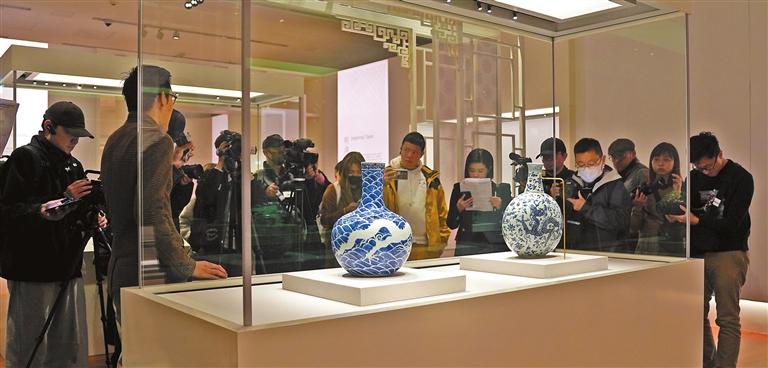
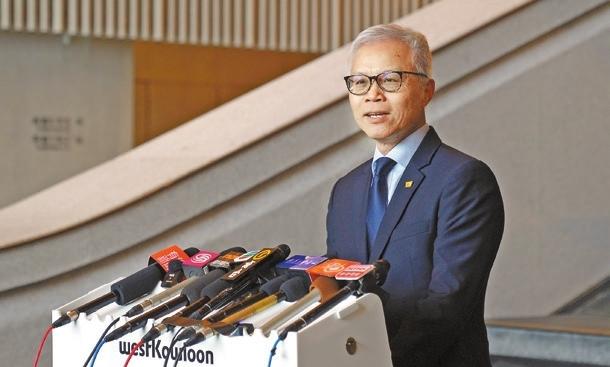
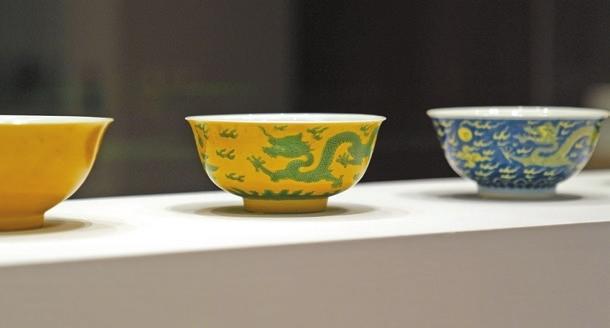
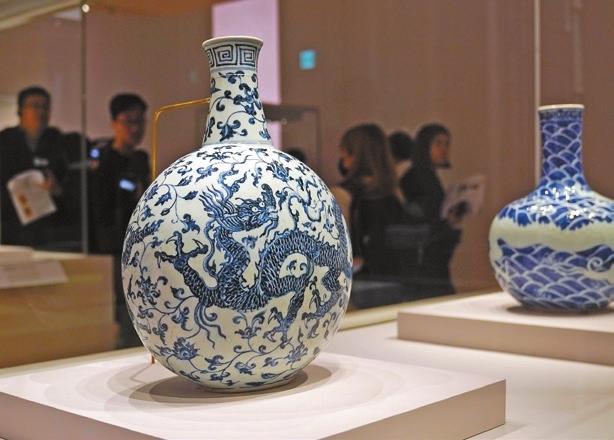
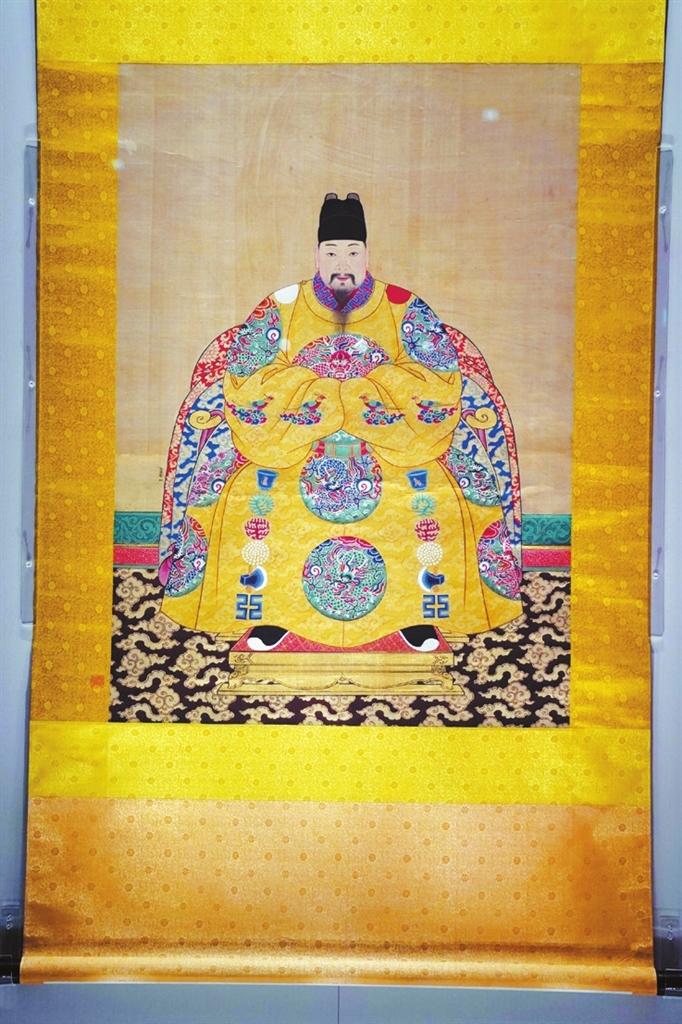
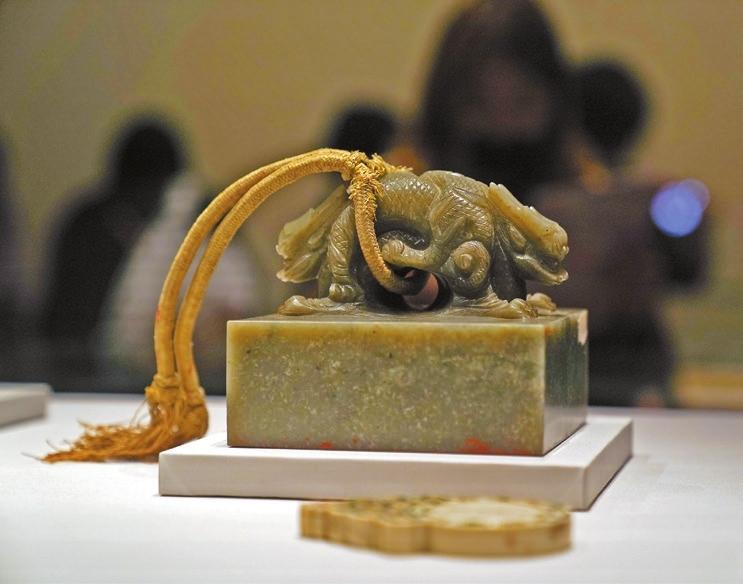
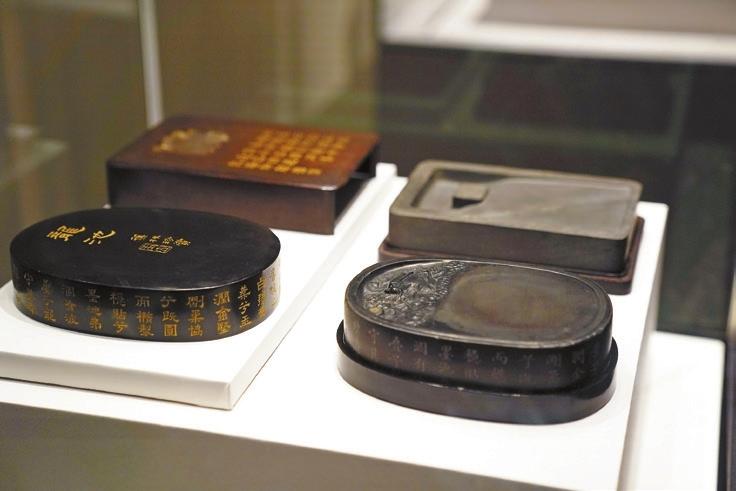
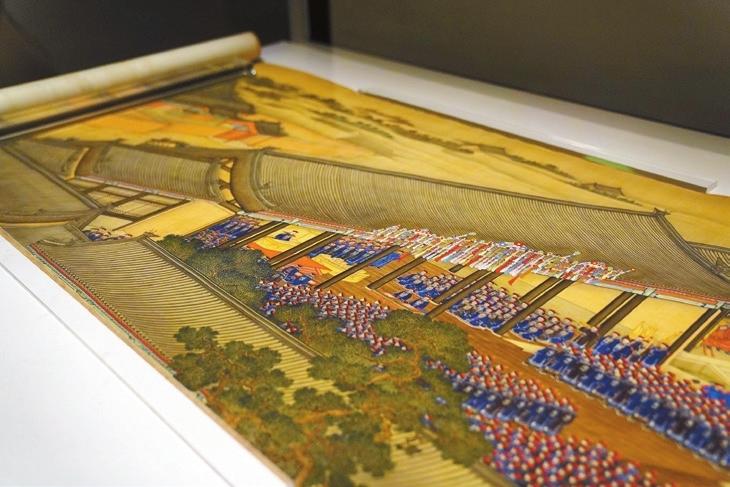
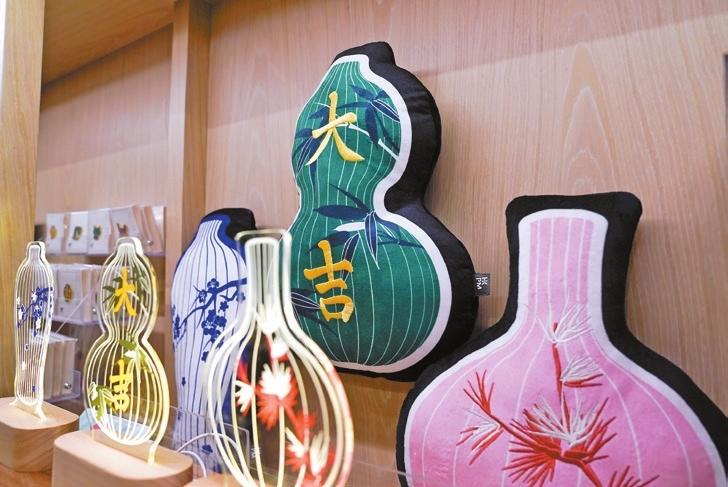
Wang Haolan Holly_cn@163.com TO mark the upcoming Year of the Dragon, Hong Kong Palace Museum (HKPM) in West Kowloon Cultural District carefully selected eight groups of Chinese dragon and Spring Festival-related artifacts from its collection, offering visitors from home and abroad an informative glimpse of how ancient Chinese people depict dragons and traditional festival in artworks. The highlighted artifacts span ceramics, jade, inkstones and paintings created between the Ming (1368-1644) and Qing (1644-1911) dynasties. The motif of the five-clawed dragon stands as one of the most representative symbols of royal families and imperial power in ancient Chinese dynasties. At the “Clay to Treasure: Ceramics From the Palace Museum Collection” thematic exhibition in HKPM’s Gallery 3, visitors can admire a porcelain vase adorned with underglaze cobalt blue motifs depicting an azure dragon meandering among intertwined flower scrolls. The utensil was crafted at the imperial kiln in the city of Jingdezhen in Jiangxi Province during the Emperor Yongle period (1403-1424) in the Ming Dynasty using the well-known “Samarra Blue” imported from West Asian countries. A set of six dragon-decorated porcelain bowls made for imperial wives during the Emperor Qianlong period (1736-1796) illustrates how colors and motifs were used to signify hierarchy. A bowl with yellow glaze on both the inside and outside was made for an empress or the empress dowager; while lower-ranking imperial consorts were entitled to bowls with yellow exteriors and plain white interiors, bowls with yellow exteriors and green dragon motifs, bowls with blue exteriors and yellow dragons, bowls with green exteriors and purple dragons, and bowls with multicolored glazes, respectively. Visitors can continue their dragon expedition from the harem to the imperial court by visiting the “Entering the Forbidden City: Architecture, Collection and Heritage” thematic exhibition in Gallery 1. The gallery’s cynosure falls on a nephrite imperial seal, the finial of which takes the form of a double-headed dragon. The seal, a manifestation of imperial power, was a carry-on of the Qing Dynasty Emperor Chongde (reigned 1636-1643). A handscroll painting depicting a lecture given by the Qing Dynasty Emperor Yongzheng (reigned 1723-1735) at the Directorate of Education is also worthy of close inspection, as the event was held in 1724, which was also the Year of the Dragon. Other dragon and Spring Festival-related artifacts include a dragon-decorated Duan inkstone made in Guangdong, which was listed in an imperial catalog of inkstones issued by Emperor Qianlong in 1778; a seated portrait of the Ming Dynasty Prince Xingxian (1476-1519); a portrait of Zhao Hongyin (899-956), who was posthumously honored as Emperor Zhaowu of the Song Dynasty (960-1127); and a painting entitled “New Year’s Day Celebration” created by artist Yuan Shangtong (1590-after 1661) at “The Hong Kong Jockey Club Series: Stories Untold — Ming Dynasty Figure Paintings From the Palace Museum” thematic exhibition in Gallery 4. Before you leave, remember to stop by the gift shop to check out the latest collection of Chinese New Year-related cultural and creative products designed and produced by HKPM, including cushions and LED lights inspired by the porcelain products in the museum’s collection, and auspicious animal-themed thermal bottles. On Jan. 16, HKPM welcomed its 2 millionth visitor since its opening in July 2022, according to museum director Louis Ng. The museum is planning to launch seven exhibitions this year, including four special exhibitions. Special arrangement in opening hours during the 2024 Spring Festival holiday: • Closed Feb. 10 • 10 a.m.-4 p.m. on Feb. 11 • 10 a.m.-8 p.m. on Feb. 12 Tickets: • General admission ticket with access to Gallery 1-7: adults HK$60, concessions HK$30, and free for children aged 6 or younger • Special exhibition ticket with access to Gallery 1-7 and Gallery 9’s “Botticelli to Van Gogh: Masterpieces From The National Gallery, London” exhibition: adults HK$150, concessions HK$75, and free for children aged 6 or younger. | 
